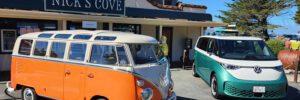
It’s instantly recognizable as a VW Bus, but what does it compete against? And will its allure last?
The 2025 Volkswagen ID.Buzz, an electric reinvention of VW’s 1960s Microbus, is finally here. After a seven-year wait, the high-style 3-row box on wheels will hit dealerships in November and December—with priority going to those dealers who sold higher numbers of VW’s ID.4 compact electric crossover.
The Buzz retails at $61,500 to $71,500, with EPA-rated combined ranges of 234 miles in base rear-wheel-drive form or 231 miles with optional 4Motion all-wheel drive. North America gets a longer-wheelbase version of the Buzz sold in Europe, with six or seven seats depending on trim—and, to answer a common question, we won’t get the commercial panel-van version offered there. (Look up “chicken tax” for the reason why.)
The media drive in mid-October was held in the San Francisco Bay Area, already home to more EVs per capita than any other part of the U.S. save Los Angeles. The launch event started with a drive of more than a dozen Buzzes down the famous Lombard Street switchbacks for a group photo. Then we headed north, with photography stops under the Golden Gate Bridge, along the ocean, and at various scenic points in Marin County.
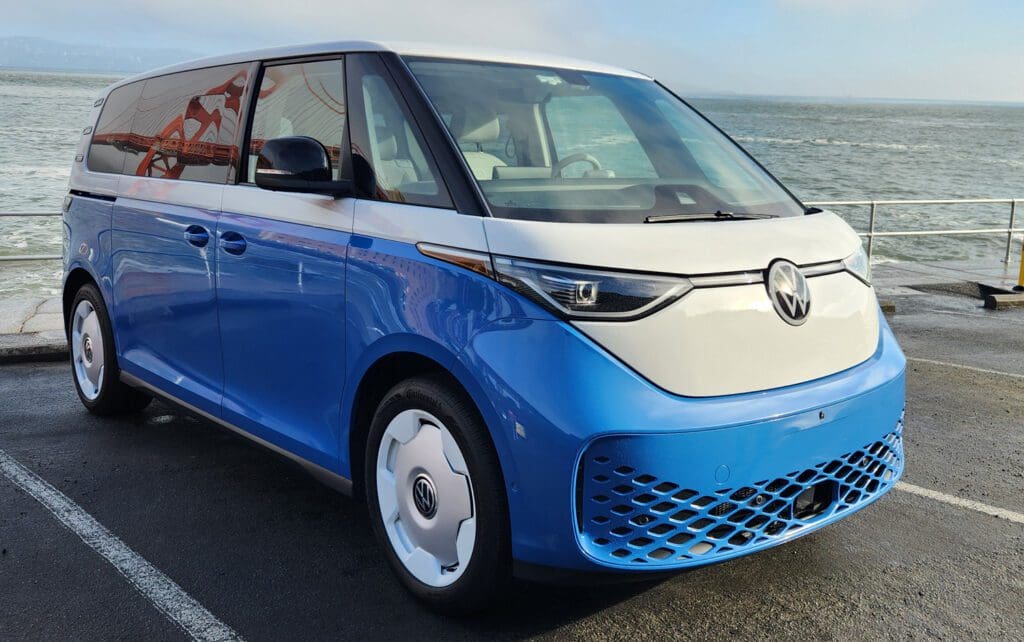
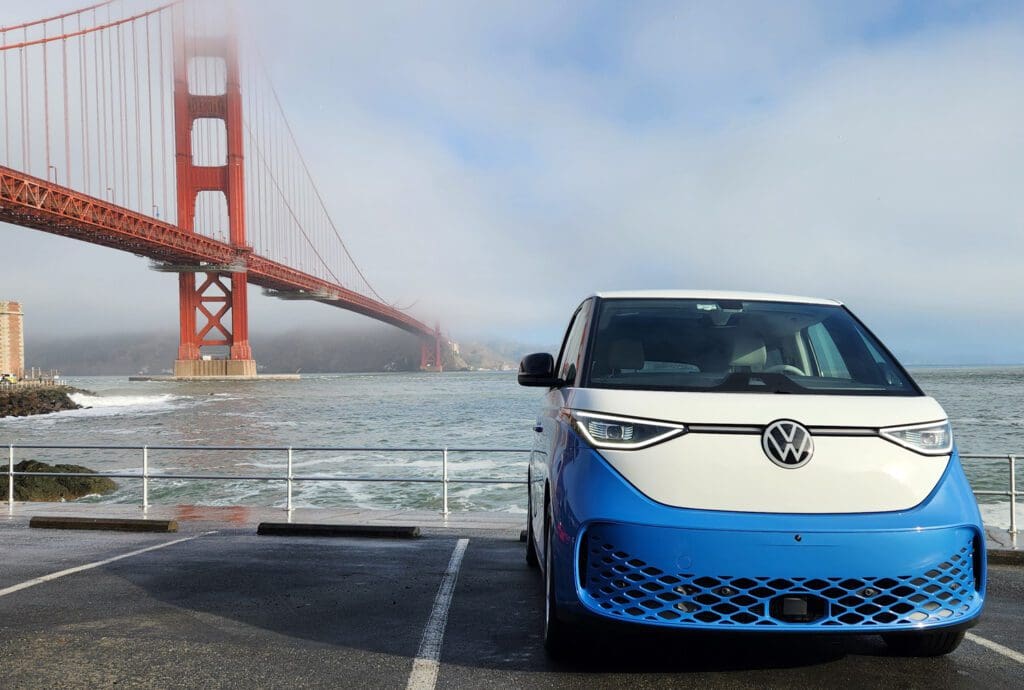
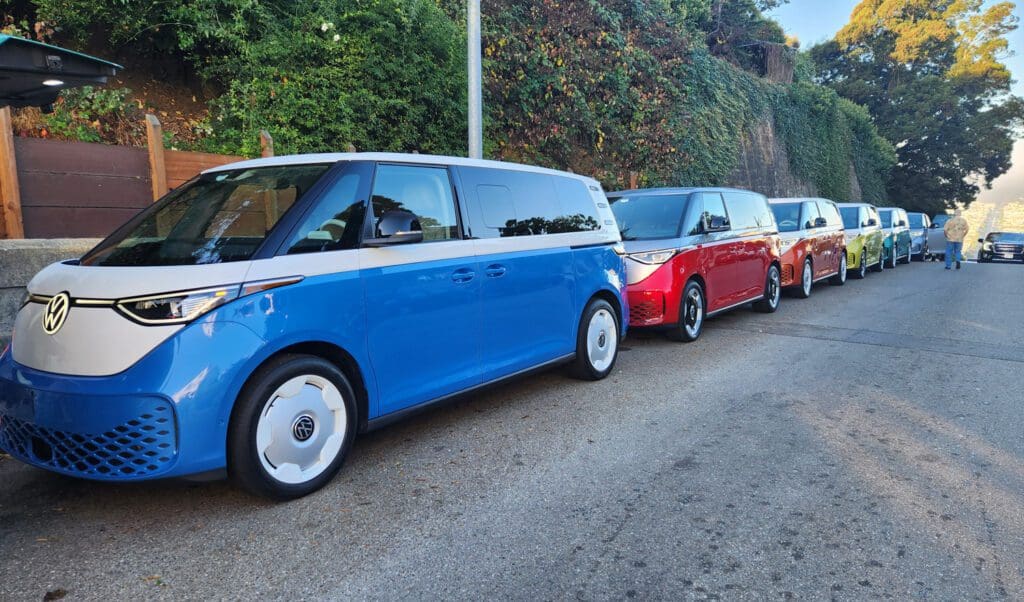
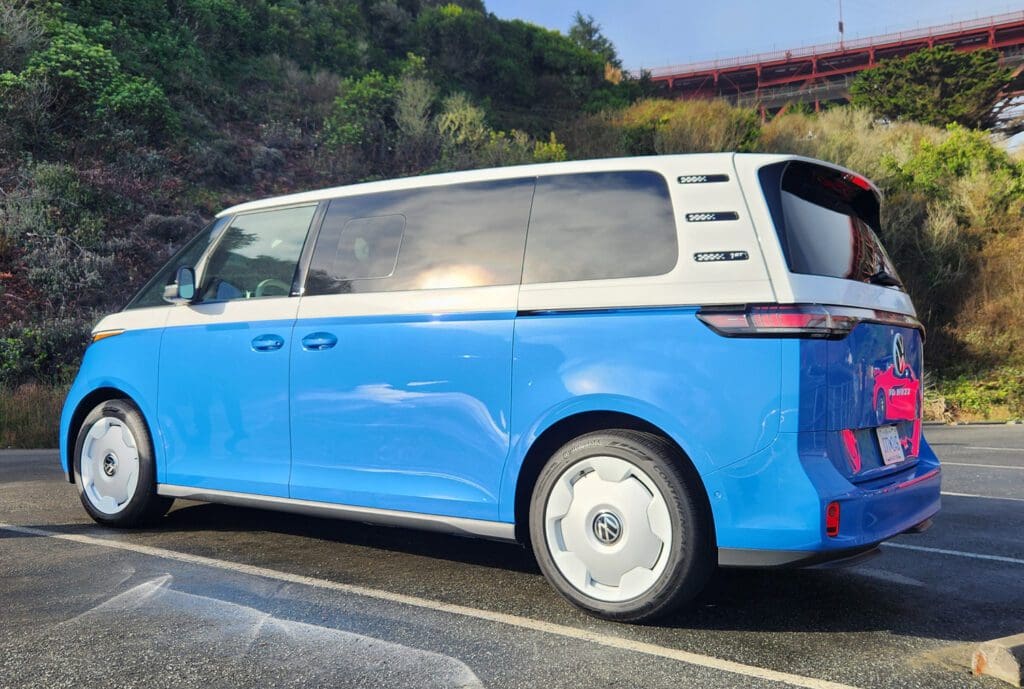

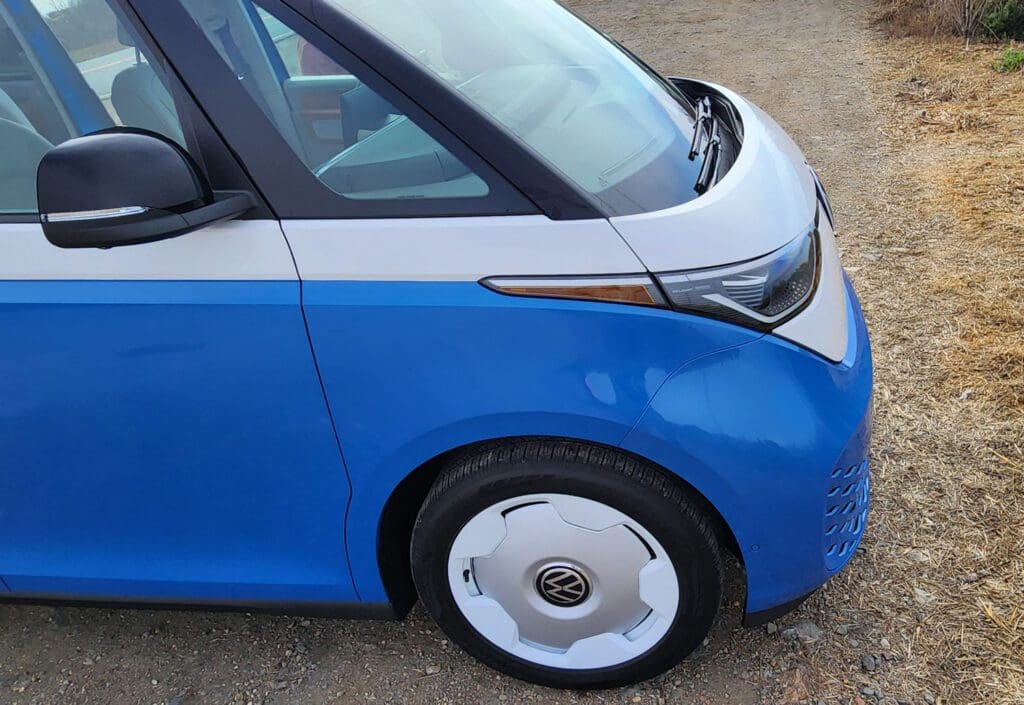
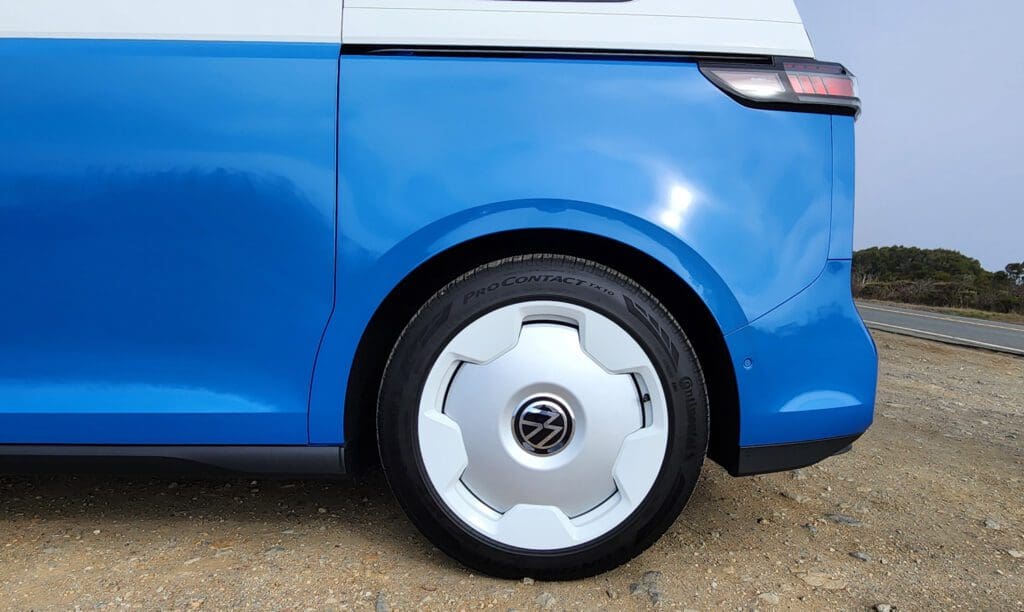
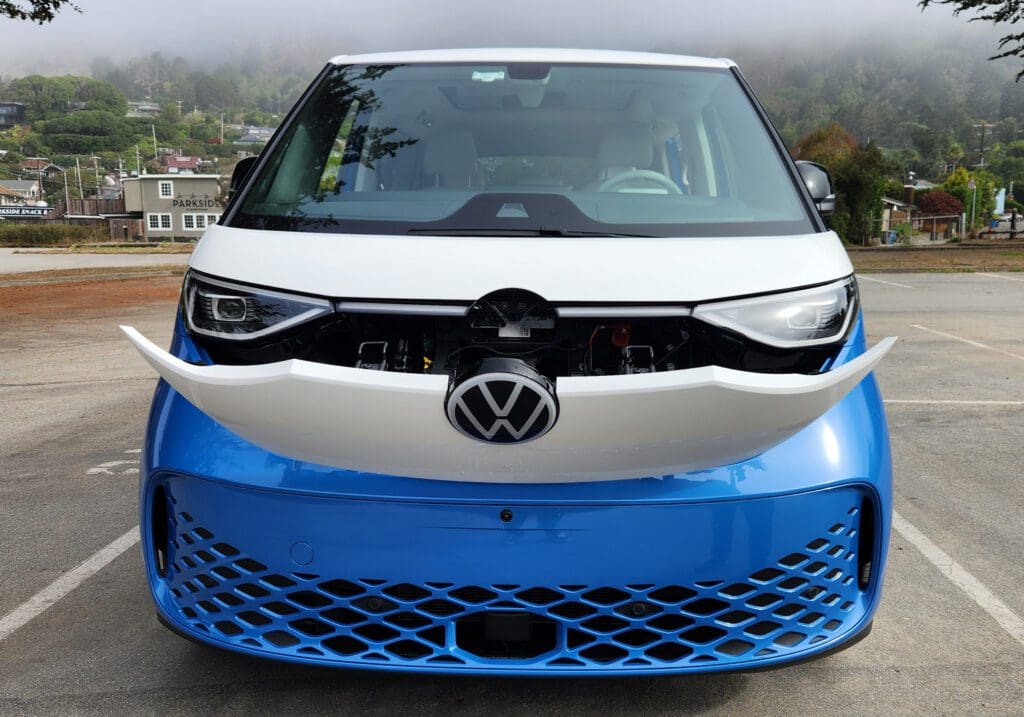

Photos by John Voelcker.
Iconic shape, two-tone telltale
The ID.Buzz still gets as many glances, photos, and questions from bystanders as it did when production was announced in August 2017. Instant recognition comes from the large, illuminated VW badge on the front, and also from one of eight two-tone paint jobs. All but one use a white upper body over a choice of orange, yellow, green, blue, “blue charcoal,” silver, or grey. To my eyes, the silver-over-Cherry Red combination was less successful. Three uniform colors—black, white, and silver—round out the exterior offerings. Inside, North American buyers have a choice of three “color worlds” not offered in other markets for the interiors: Copper, Dune (ivory), or Moonlight (deep brown). The Buzz does not offer, as VW explicitly noted, the stereotypical all-black German interior. And hurray for that.
The Buzz is undeniably tall, vertical, and slab-sided. The short front nose and a fixed window between the windshield pillar and the front of the door frame neatly disguise the substantial distance between the base of the windshield and the driver + front passenger inside. That provides the kind of safety crush zone that didn’t exist in the original Type 2, which went for several decades after its 1950 launch with the driver’s feet just 18 inches or so from the crash.
Iconic design elements include very short overhangs, superb outward visibility due to upright seating and many windows, huge interior volume for its footprint, and rear-wheel drive. It’s now provided by an electric motor, not an air-cooled flat-4 combustion engine, but still.
The front and side views are appealing, but the vertical, knife-edged rear seems to me the car’s least successful angle. Still, it opens on 18.6 cubic feet of load space behind the third row, which expands to 75.5 cu ft if you remove the third row entirely—and a remarkable 145.5 cu ft with the second row folded flat (it doesn’t remove).
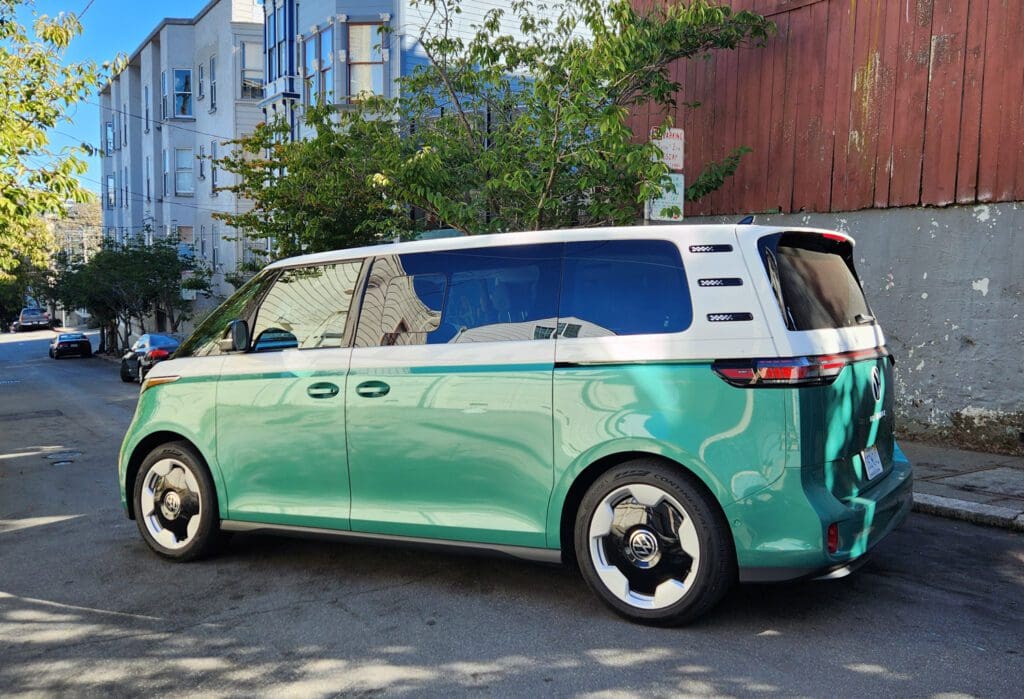
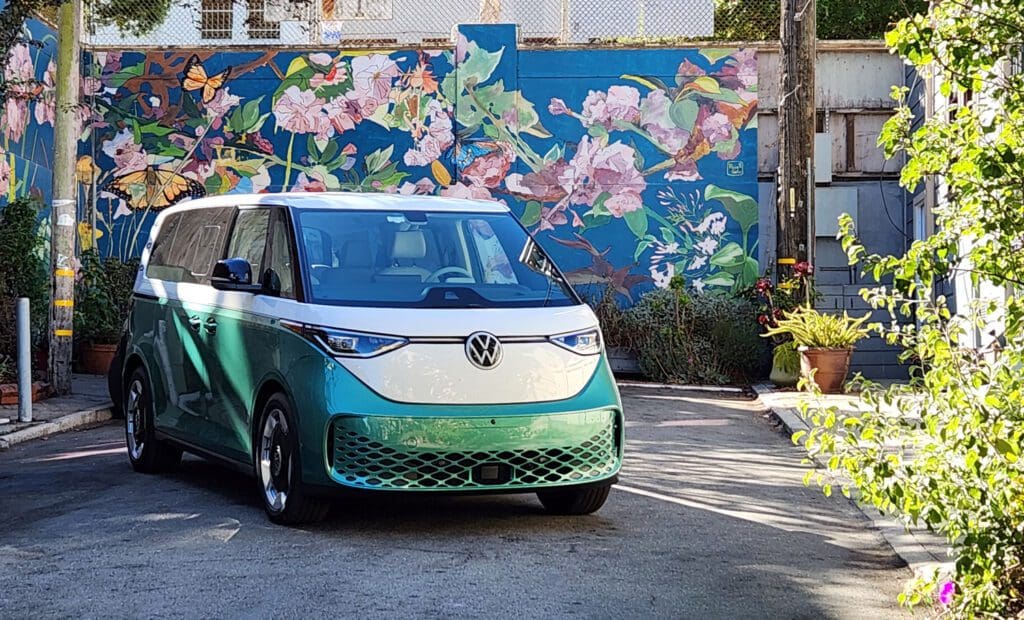
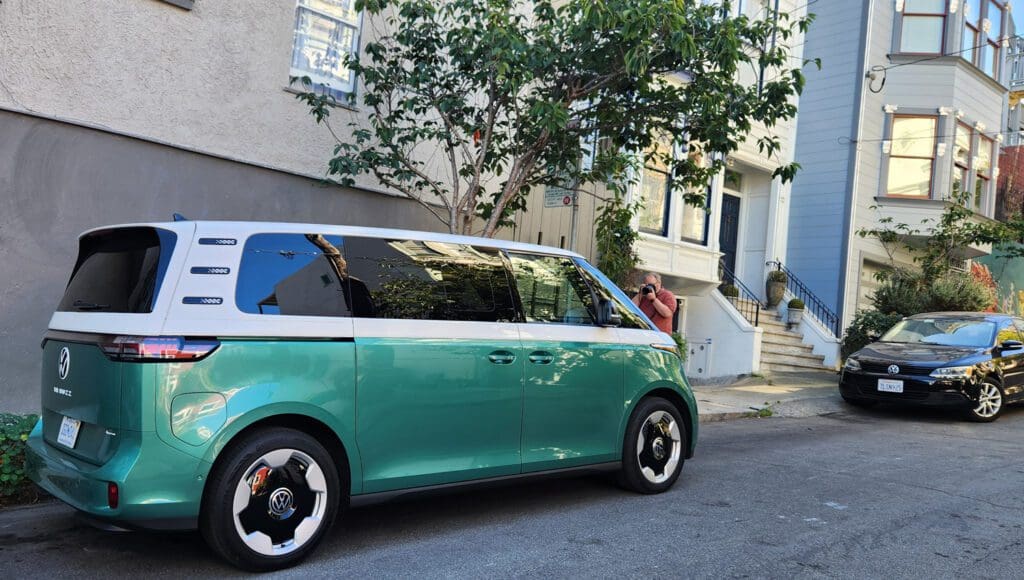
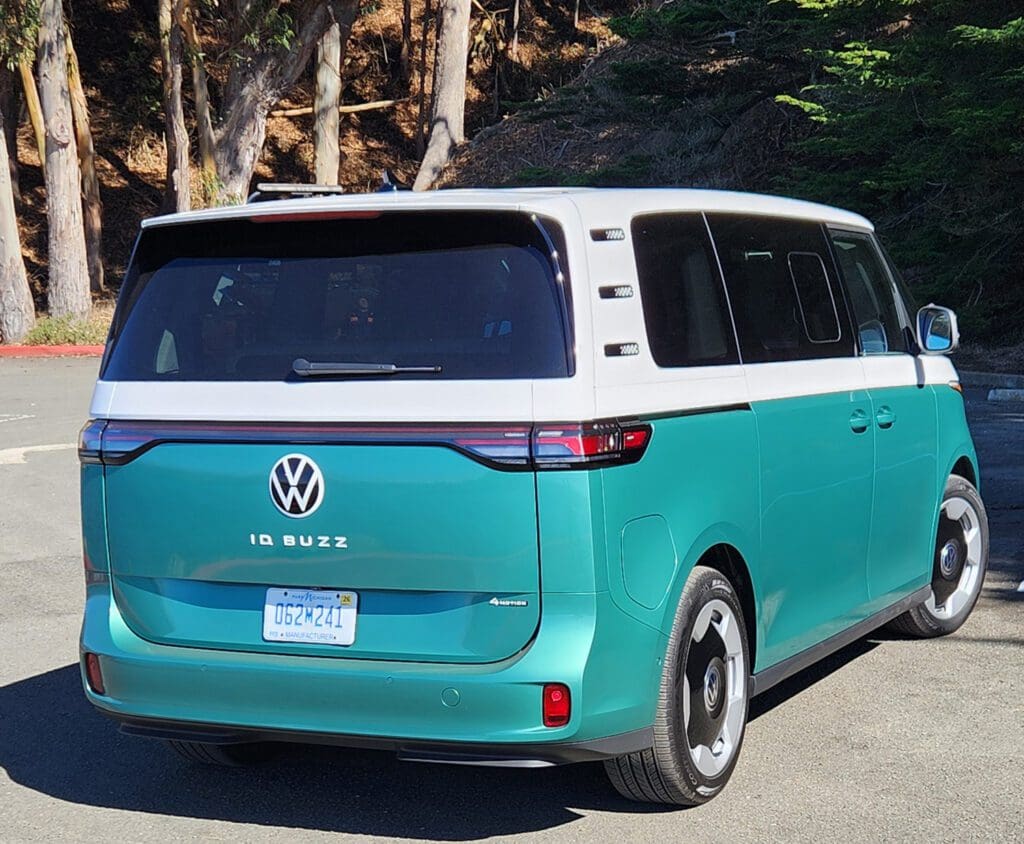

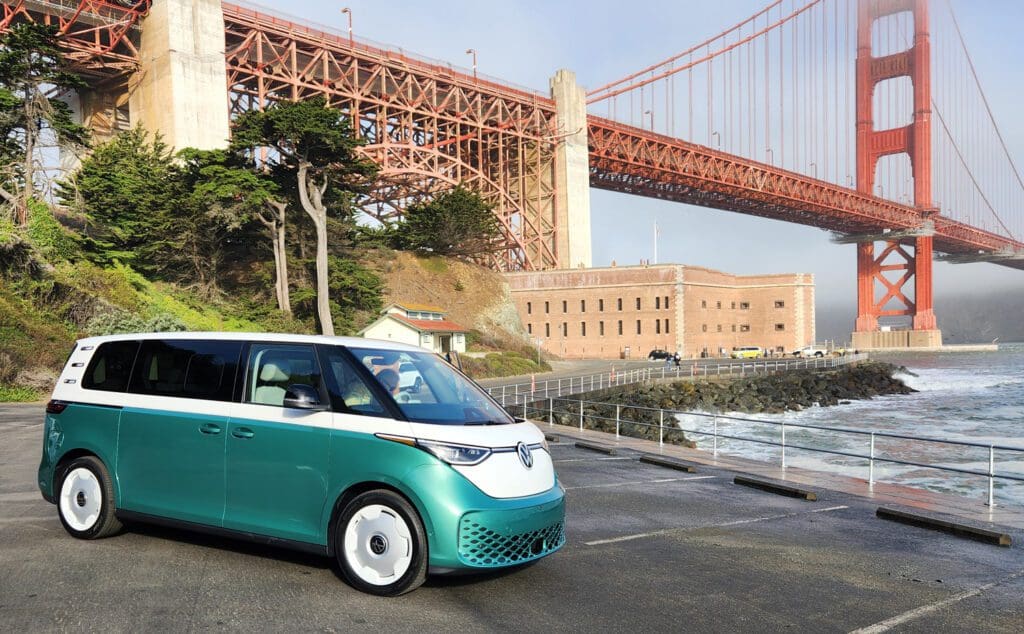
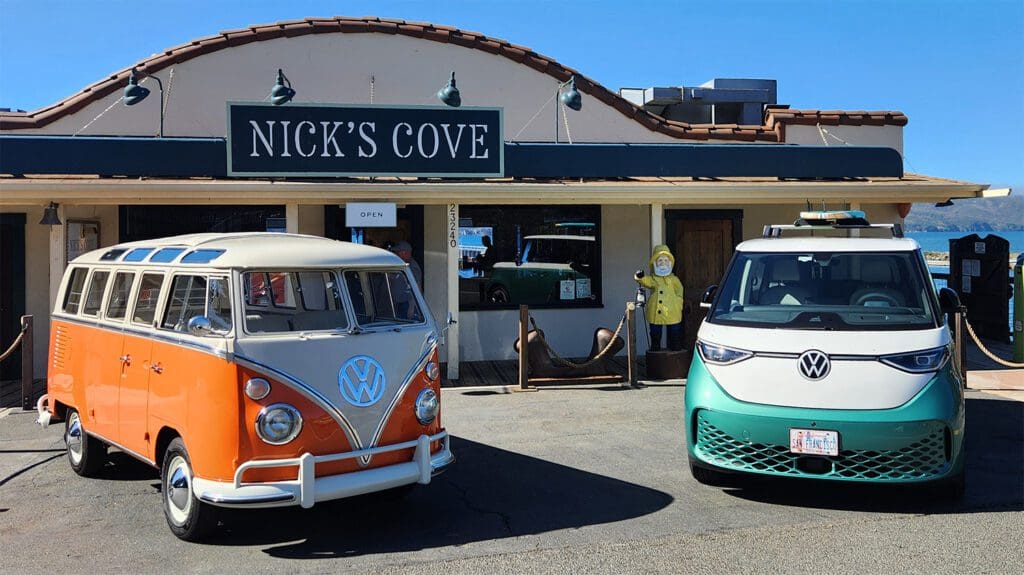
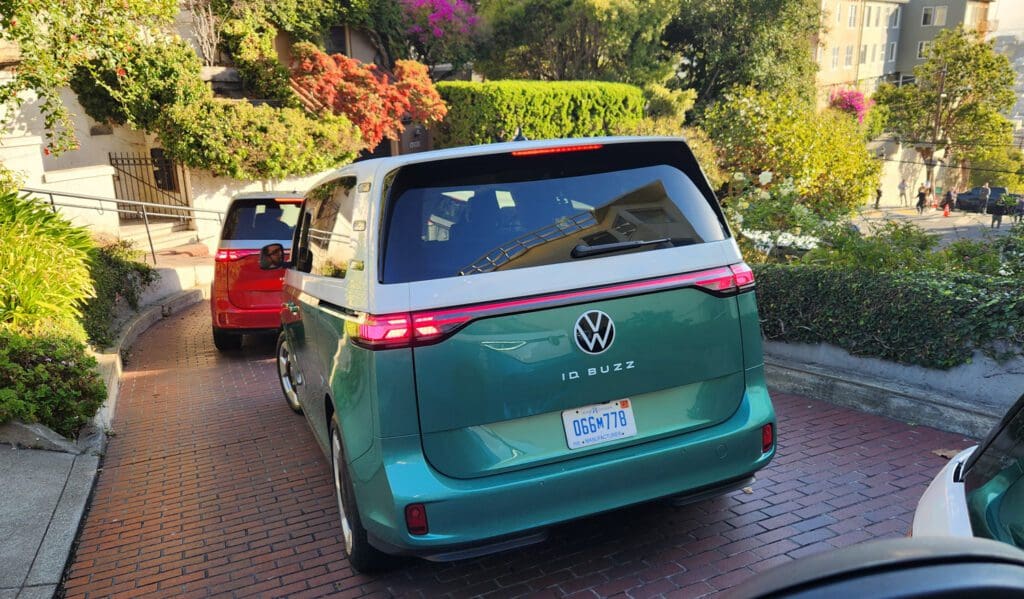
Photos by John Voelcker.
Small turning circle, predictable performance
All versions of the ID.Buzz sold in the U.S. are powered by a 91-kilowatt-hour (gross) battery pack. The standard model has a 210-kilowatt (282-horsepower) motor powering the rear wheels, rated at 413 lb-ft of torque. The optional 4Motion all-wheel-drive system adds a 40-kW (53-hp) motor to power the fronts, rated at 99 lb-ft. Range for the two versions is remarkably close: 234 miles for RWD, and just 3 miles less for the AWD variant at 231 miles.
Behind the wheel, our jaunt down Lombard Street immediately made clear that while this is a largish vehicle—it has the footprint of the VW Atlas Cross Sport midsize two-row SUV—its 37.4-foot turning circle makes it hugely maneuverable (42.7 feet for the 4Motion AWD model). It’s a trait shared with the ID.4, and we commend VW for taking advantage of EV packaging to do it.
Acceleration is far from a Tesla-style kick in the small of your back, but the measured pace certainly improves on the original Microbus which was—not to put too fine a point on it—very slow, sometimes dangerously so. Volkswagen cites acceleration from 0 to 60 mph in roughly 6.0 seconds, though we weren’t able to do any instrumented testing.
Regenerative braking isn’t the strongest, perhaps due to the power-to-weight ratio. We longed for one-pedal driving all the way down to 0 mph, but it’s not provided. The regen did feel stronger in the AWD version, with its extra motor—though steering also felt heavier on that model.
Handling and roadholding is, in a word, unremarkable. It’s predictable, reliable, and safe, though even on 20-inch wheels, you can feel the tires working hard to manage the load of a 3-ton vehicle if driven even somewhat energetically. That likely won’t matter for mall runs or school transport.
The various issues and drawbacks of VW’s user interface have been covered at length by other outlets, so we won’t detail them here. Two examples suffice. First, some screens have back buttons—but others don’t. Second, the vehicle icon in the header bar of the 12.9-inch center display produces one set of settings—but an identical icon on the main checkerboard screen of functions produces a totally different set of options. This makes no sense.
Volkswagen’s onboard Level 2 charger is rated at 11 kilowatts, presuming the charging station and circuit can provide it. DC fast-charging is quoted at up to 200 kilowatts; as usual, that’s under ideal circumstances. We weren’t able to recharge the Buzz during our short time with the test vehicles, but we look forward to doing so when we get one for a longer test.
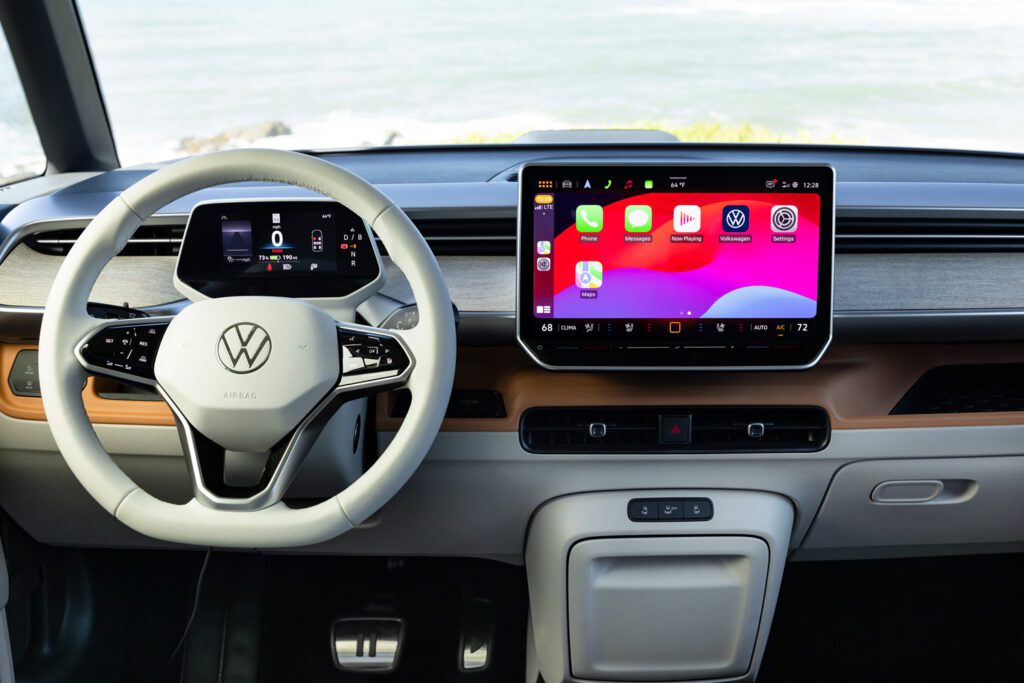

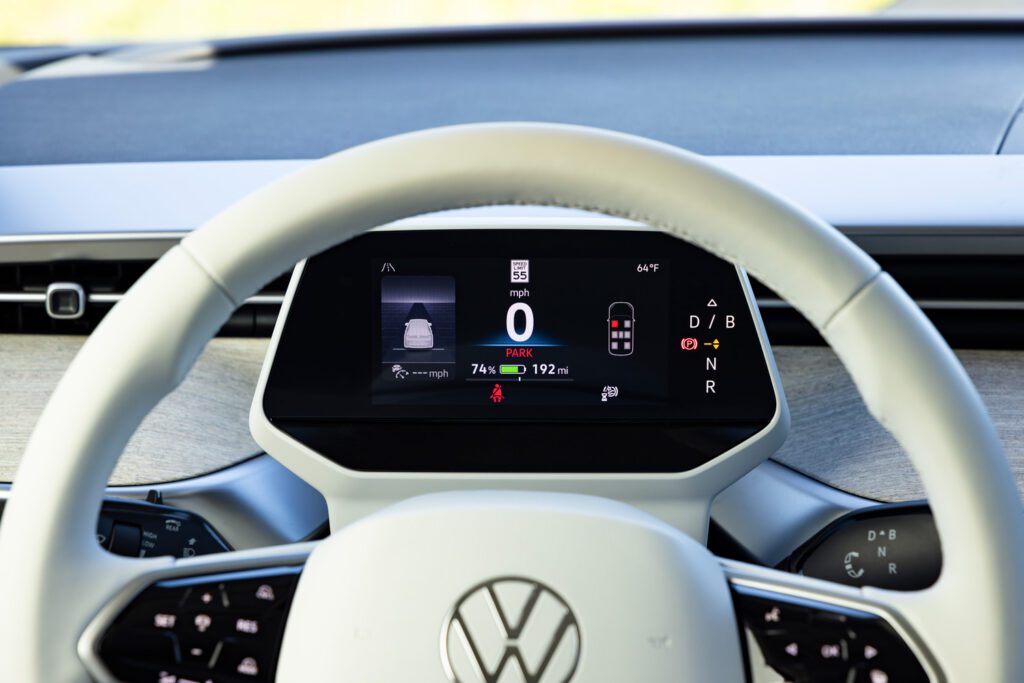
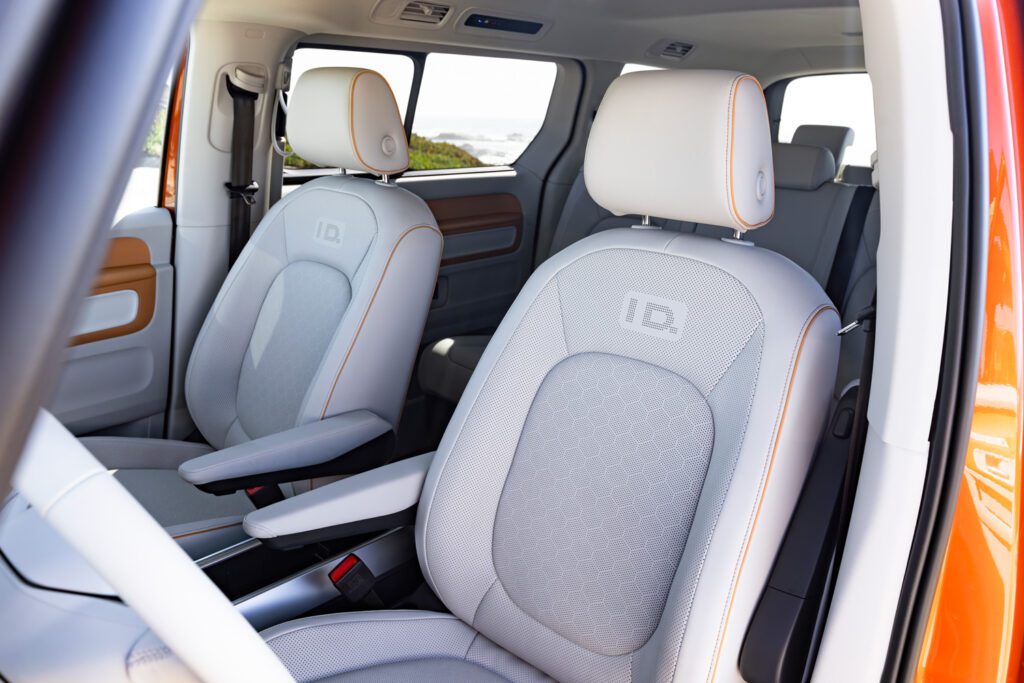
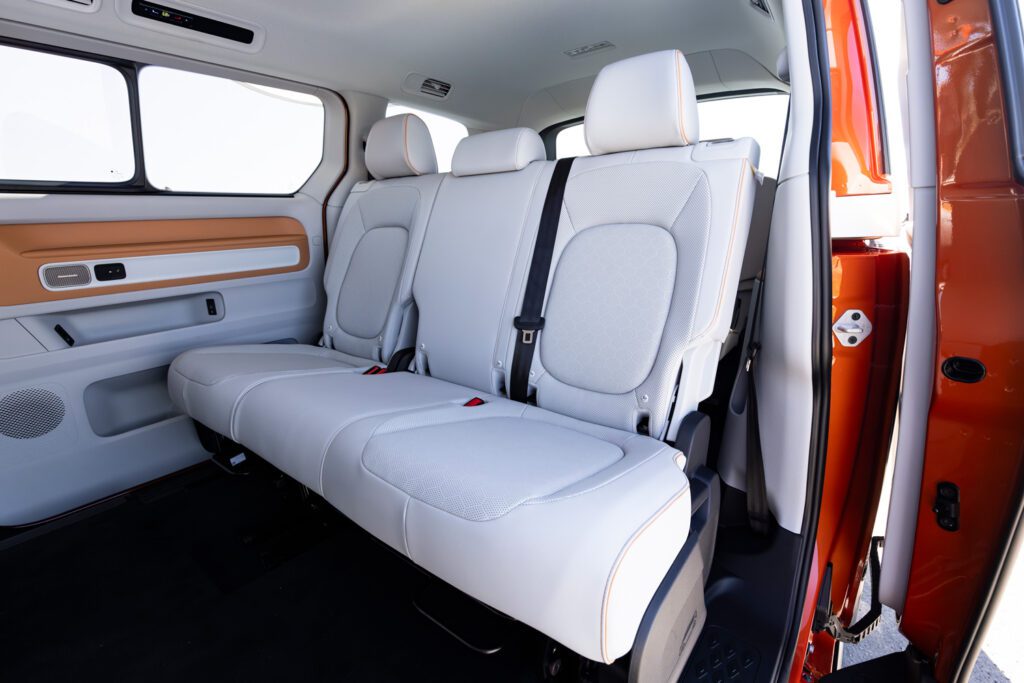
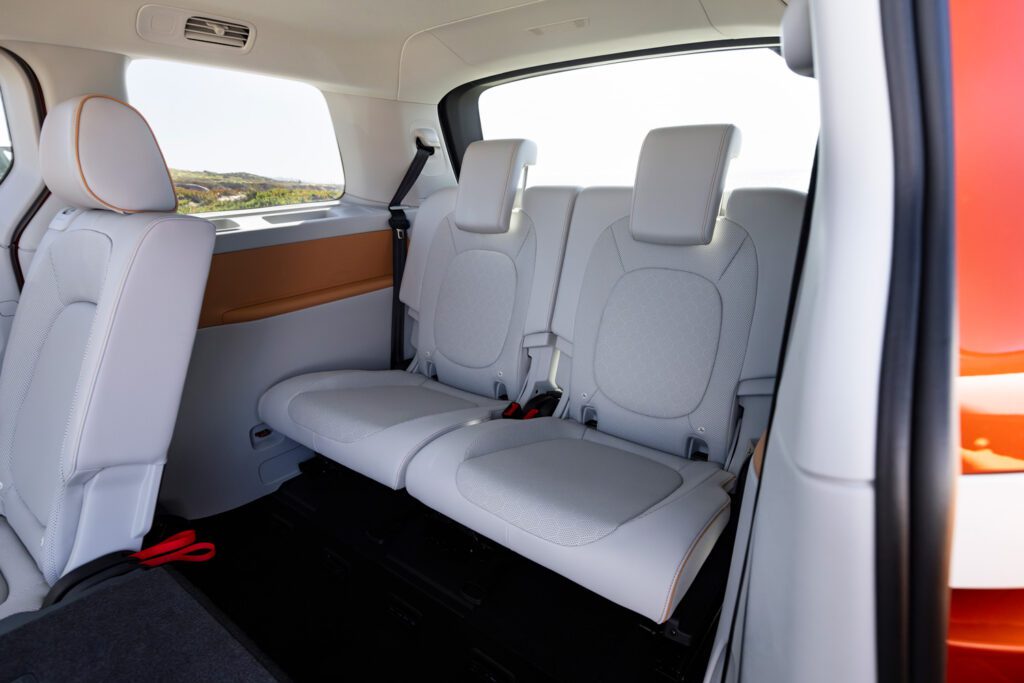

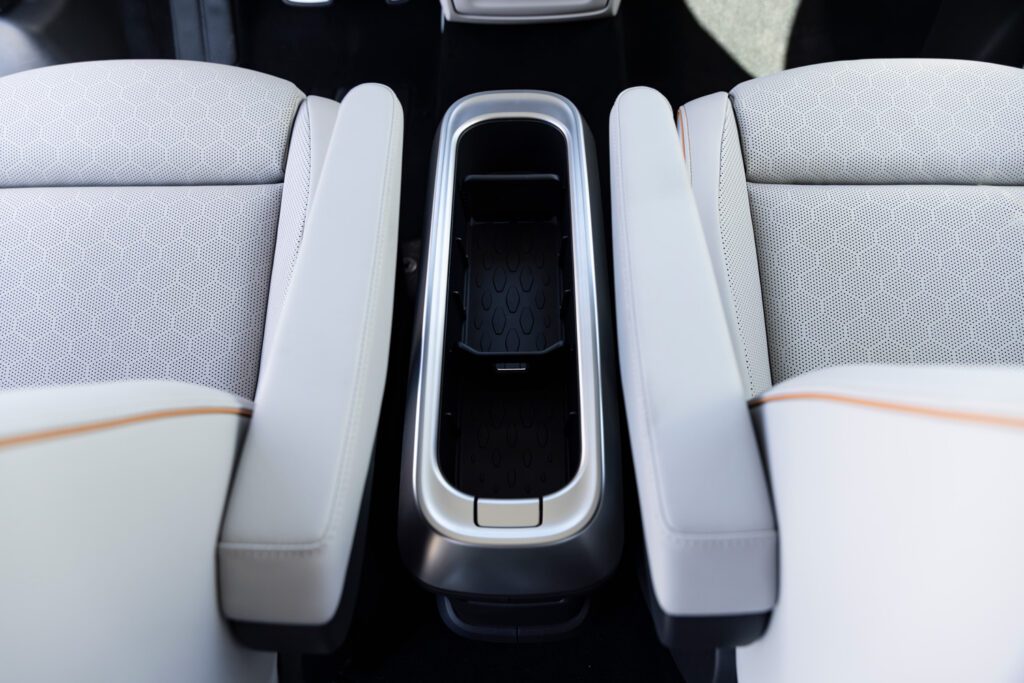
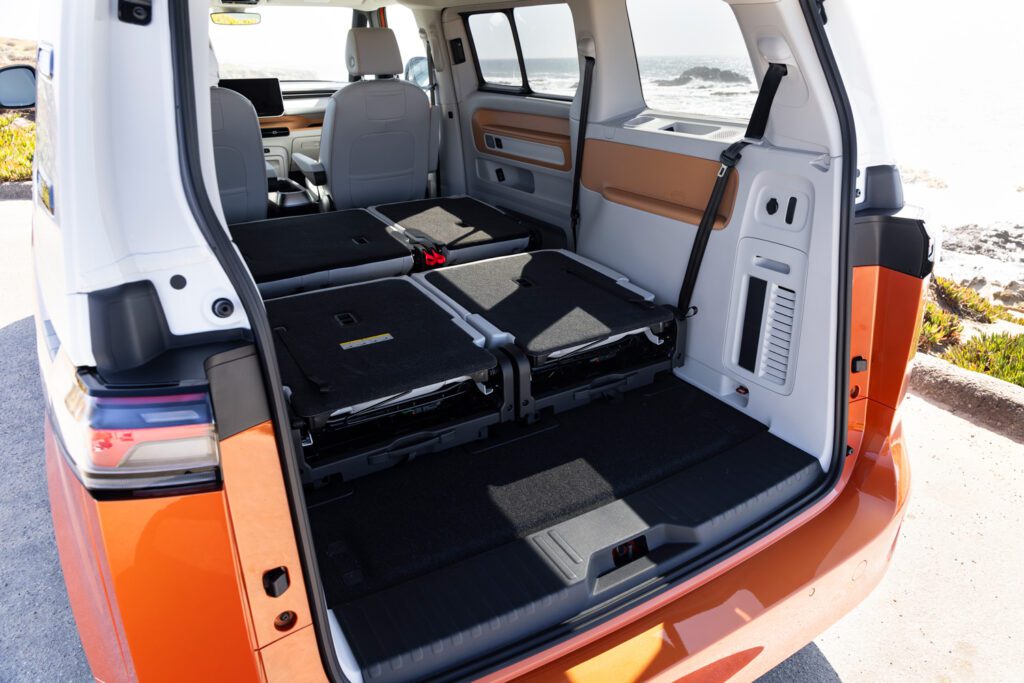
Photos by Sam Dobbins, courtesy of Volkswagen of America, Inc.
Seven seats, great visibility
Shorter drivers may need to learn the best way of stepping up and into the Buzz, which could use a flat lower step in the doorsill—rather than the current beveled metal sill. The driver ends up using the steering wheel as a grab handle, and the actual grab handle above the door felt distinctly flimsy under the weight of each of two middle-aged male test drivers.
Once inside, the leatherette seats are comfortable, the forward view is superb, and the entire cabin seems light and airy. That’s due to the largest glass roof VW has ever offered, a standard feature with electrochromic “smart glass” that changes instantly from translucent to heavily tinted at the press of a button.
The second row is either a 3-seat bench or a pair of captain’s chairs, but there’s still plenty of room at the rear of the sliding doors to enter the third row with ease. Volkswagen claims the ID.Buzz has the best third-row legroom of any vehicle sold in North America today. While we couldn’t compare it to a Chrysler Pacifica, Honda Odyssey, or Toyota Sienna, the third row felt as large as the capacious Pacifica, presently our gold standard for third rows.
For flexibility, the “Buzz Box” center console can be relocated or removed entirely. The Buzz still doesn’t have as many useful storage areas and cubbies as your average Hyundai. While there’s a pair of cupholders in the console, for instance, the door pockets don’t have bottle-holders molded into them, so a bottle of water simply slides around. On the other hand, many storage spaces have rubber pads at the bottom to hold small, light items in place.
In a first for any Volkswagen sold in North America, some ID.Buzz versions include a retractable trailer hitch. Towing capacity is 2,600 lbs with standard rear-wheel drive, and 3,500 lbs with AWD—and undoubtedly a corresponding hit to real-world range. Unfortunately, our early-build test cars did not include the hitch, so we can’t weigh in on how it works.
What is it, and who wants it?
One of the biggest questions around the ID.Buzz is what it competes with. VW stays strictly away from the word minivan, saying only 3 percent of hand-raisers for the Buzz are minivan owners. By far the biggest numbers come from a midsize SUV (57 percent) or full-size SUV (28 percent).
This led VW to a comparison slide showing a truly remarkable array of vehicles: Chevrolet Suburban, Chrysler Pacifica (plug-in) Hybrid, Kia EV9 (an EV), Rivian R1S (an EV), Toyota Sienna, and its own VW Atlas. We might add the upcoming Lucid Gravity as well. The ID.Buzz is shorter than all of them, but has the best headroom in the second and third rows, and the most cargo volume: 1 cubic foot more than even the massive Chevy Suburban.
But will interest last? VW’s own experience with two generations of New Beetle showed that retro designs are often huge sellers at the start, but fall off quickly. Can the Buzz endure? Stay tuned.
Prices and features
The 2025 Volkswagen ID.Buzz range starts with the Pro S model at $61,545, available only in rear-wheel drive. Standard features include powered sliding side doors and tailgate, 12-way adjustable heated and ventilated front seats, heated seats for the two outboard second-row positions, three-zone climate control, no fewer than eight USB-C ports, a 12-volt outlet in the load bay, and a 120-volt socket in the front row.
Moving up to the Pro S Plus adds another $2,500, in exchange for that retractable tow hitch, a head-up display for the driver, and on the 4Motion AWD version, a heated windshield and a pair of captain’s chairs to replace the second-row bench. The captain’s chairs are a $695 option on the RWD Pro S version. Other options on all versions of the Pro S Plus include two-tone exterior paint ($995) and the panoramic glass roof ($1,495).
Finally, the limited First Edition package adds a further $2,000 on top of that, for a total of $67,045. It’s effectively a Pro S Plus with the two-tone paint, panoramic glass roof, and powered doors standard, along with 20-inch wheels, Heritage floor mats, and special badging.
For the Pro S Plus and First Edition, 4Motion all-wheel drive adds a whopping $4,500 to the price. All prices cited include a mandatory $1,550 destination fee.
Volkswagen provided airfare, lodging, and meals to enable Charged to bring you this first-person drive report.
from Charged EVs https://ift.tt/pE0IMgb


No comments:
Post a Comment